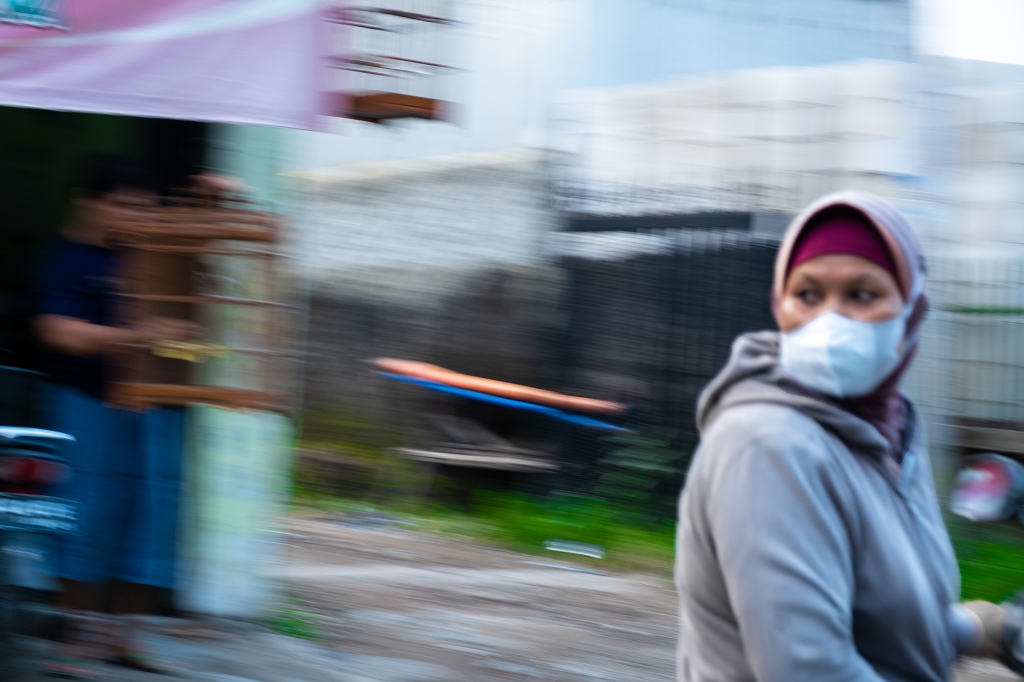Colours and edges
Splashes and blur
Nothing to see
But for the eyes
A turn of a head
And just enough detail
This would be a discard
X’d out on a contact sheet
But for those eyes
Because now I want to know
What she sees
Eyes in a Field of Blur
Jakarta
Java, Indonesia
Taken during travels, 2022
I’m convinced he said it more as a joke, as an unsubtle ribbing of the photographer he said it to, Edward Weston. You see, Edward Weston was about as bourgeois a photographer as ever they come. He was known for stark clarity and detail in portraits, nudes, landscapes and still lifes of shells and vegetables. Weston gave himself time in his studio to setup lights and the camera just the way he wanted before ever taking a photograph. Each of his photographs required time and a lot of expensive equipment to setup and shoot.
Cartier-Bresson, on the other hand, was a proletarian, a street photographer. He was entirely devoted to everyday people in the street, capturing human moments with his small hand-held Leica. Such moments have no patience for focusing a lens to tack sharpness or making an effort to position and hold a camera steadily for a shot, and definitely no time to control the light in order to ensure the exposure he needed. Arguably, if you’ve caught an interesting enough moment between human beings on film, your audience is going to forgive you — and the photograph — for not being exactly crisply detailed. A bit of motion blur, a tad out of focus … who cares? It’s the moment that counts, and a slightly blurry great moment is still a great moment. Cartier-Bresson made a living out of being forgiven if the photograph was a little soft.
“Sharpness doesn’t matter” is an ongoing debate in some of the online photography groups I follow. It’s not important, some say, to pay the extra dollars for a sharper lens, or a lens which gathers enough light to ensure a shutter speed that stops action. Just so long as the image itself is compelling, the person looking at the photograph will forgive the photograph’s softness.
The thing is, sharpness doesn’t matter, until it does. And when it does, it matters a lot. No one wants to look at a softly focused landscape, or a meticulously lit pepper in a studio setup that has motion blur. Weston never becomes a renowned photographer if he can’t get a sharp image on film. Sometimes, clarity is important.
But how about a badly motion-blurred Muslim woman shot from a taxi going over 40km/h? Can I get away with that? Maybe. If the moment captured by the camera is intriguing enough, and I’ve managed to compose a frame that’s compelling and pleasant enough. Even if Henri Cartier-Bresson would never have printed such a blurry moment, would have put a big “X” over it on the contact sheet? Maybe.
I don’t know. What do you think?
